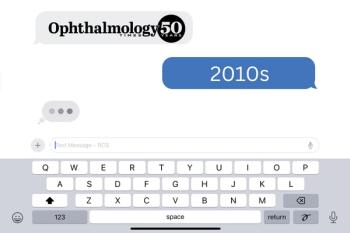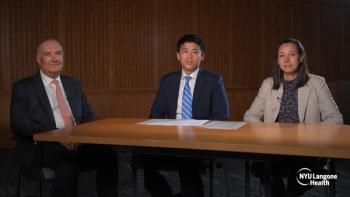
- Ophthalmology Times: July 1, 2020
- Volume 45
- Issue 11
Investigators target algorithm for diagnosing glaucoma
Research finds automated segmentation software examines OCT scans
In a study carried out by investigators at Duke University’s Vision, Imaging and Performance Laboratory,1 Atalie C. Thompson, MD, MPH, and colleagues developed a segmentation-free deep learning (DL) algorithm using the entire circle B-scan image from
The aim of the investigators was to determine if such an algorithm would be better at detecting glaucomatous damage than using the
Related:
According to the authors,
Structural evaluation
Spectral-domain OCT (SD-OCT) is the most commonly used test for structural evaluation. It provides objective quantification of damage that has occurred to the optic nerve head and RNFL.
To obtain quantitative thickness measurements, conventional SD-OCT software applies segmentation algorithms to delineate the RNFL and extract its thickness.
Although this is generally accurate for diagnosing
Even without segmentation errors, interpreting conventional SD-OCT RNFL information can be difficult, due to a large number of summary parameters in addition to maps and plots.
Related:
Deep learning for segmentation-free analysis
Recent advances in artificial intelligence have led to the development of DL algorithms, which can be trained to accurately detect complex patterns in images.
These algorithms can learn to analyze information across an entire SD-OCT image rather than just a segment, and may potentially provide more information about the presence of glaucomatous damage than individual SD-OCT parameters from segmentation.
Interpreting the whole image may minimize false positives that arise when clinicians assess multiple individual parameters.
Related:
Study description
This was a cross-sectional study of 1154 eyes in 635 individuals, and was undertaken to develop a segmentation-free DL algorithm to assess glaucomatous structural damage, using the whole peripapillary SD-OCT B-scan.
According to Thompson, the algorithm’s performance was compared with that of conventional RNFL thickness parameters.
Related:
A convolutional neural network was trained to discriminate glaucomatous from normal eyes using the SD-OCT circle B-scan without segmentation lines.
The research team found the DL algorithm had a greater area under the receiver operating characteristic curve than RNFL global and sector parameters, and it was more sensitive at 80% and 95% specificity. This appeared to be even more likely in early disease.
Limitations
The authors noted some limitations. Although they used an independent test dataset for the final assessment of diagnostic accuracy, external validation in populations from other clinical settings is desirable.
In addition, it should be noted that the diagnosis of
Therefore, it remains to be seen how incorporating such an algorithm would affect clinical diagnosis when combined with these other pieces of information acquired in clinical practice, as well as for assessing change over time.
Conclusion
The authors concluded that the segmentation-free DL algorithm they developed performed better than global and sectoral RNFL thickness parameters for discriminating glaucomatous from control eyes, especially in cases of preperimetric or early perimetric glaucoma.
They believe that using this DL algorithm in a clinical setting may improve the accuracy and sensitivity of SD-OCT for diagnosing
Future studies should investigate how such an approach contributes to diagnostic decisions when combined with other relevant clinical information, such as risk factors and perimetry results.
---
Atalie C. Thompson, MD, MPH
p: 650/868-8050 e:[email protected]
Dr. Thompson is a senior resident in ophthalmology at Duke Eye Center in Durham, North Carolina.
Reference
1. Thompson AC, Jammal AA, Berchuck SI, Mariottoni EB, Medeiros FA. Assessment of a segmentation-free deep learning algorithm for diagnosing glaucoma from optical coherence tomography scans. JAMA Ophthalmol. 2020;138(4):333-339. doi:10.1001/jamaophthalmol.2019.5983
Articles in this issue
about 5 years ago
Pearls for managing COVID-19 pandemic north of the borderabout 5 years ago
Stepping up to meet visual needs of refugees in Bangladeshover 5 years ago
A sight for sore eyesover 5 years ago
Ultra-widefield imaging can enhance efficiency for practicesover 5 years ago
Study targets results of MIGS device versus trabeculectomyover 5 years ago
Getting it right: There is no magic bullet for IOL calculationsover 5 years ago
Surgeons discuss MIPS, impact of pass-through medicationsover 5 years ago
For IOL placement, location is keyNewsletter
Don’t miss out—get Ophthalmology Times updates on the latest clinical advancements and expert interviews, straight to your inbox.





















































.png)


